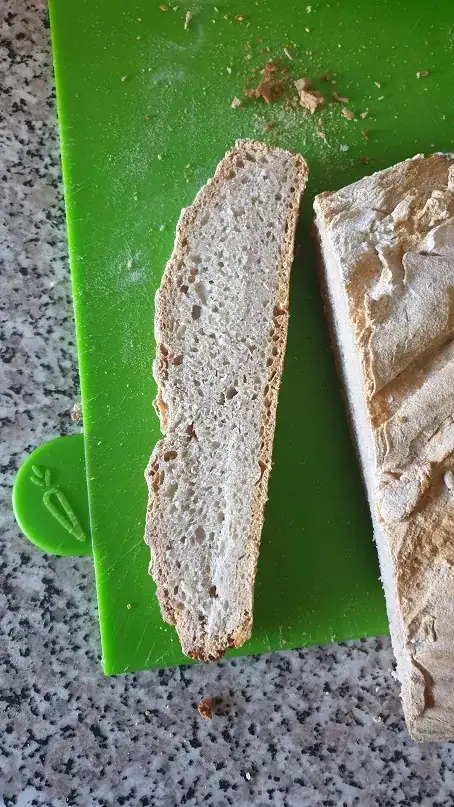Any pointers on getting a 75% hydration wheat sour dough loaf to hold more shape and spread less?
Full details of current method:
I have a 100% wheatflour levain with a 75% hydration. It is stiffer than most I see online but grows well. It lives in the fridge all week until I make a loaf. It then gets fed with 40 g flour per 30 g of water and left to expand.
I then make a kilogram loaf using 400 g flour and 300 ml water. This is vigorously kneaded for 10 minutes by hand or a good 5 minutes by a Kenwood Chef Mixer with the dough hook.
After being left for an hour in a moist environment then folded and added to a cane banneton it is left untouched until it has expanded by varying amounts (somewhere between 50-100 % extra in volume).
It is only touched once more when the oven is preheated -it is turned out onto a silicone sheet on an oven tray and then placed on a preheated, upturned glass dish to warm the bottom of the loaf. It's then baked in an oven at 220 C for ten minutes and then 200 C for another 30 minutes.
Invariably, the loaf produced is very flat compared to the banneton with a nice crumb and flavour. The crumb is stretchy and a little chewy.
I have tried adding less water than this with similar results. This loaf was proved in fridge overnight and baked in the morning. The loaf looks similar when proved at room temperature over shorter durations.
All I want is to produce similar results except the bread holds its shape more and produce a taller. Any tips?
As my partner and I only eat one loaf per week it's a slow trial and error process varying hydration and watching for expansion.
